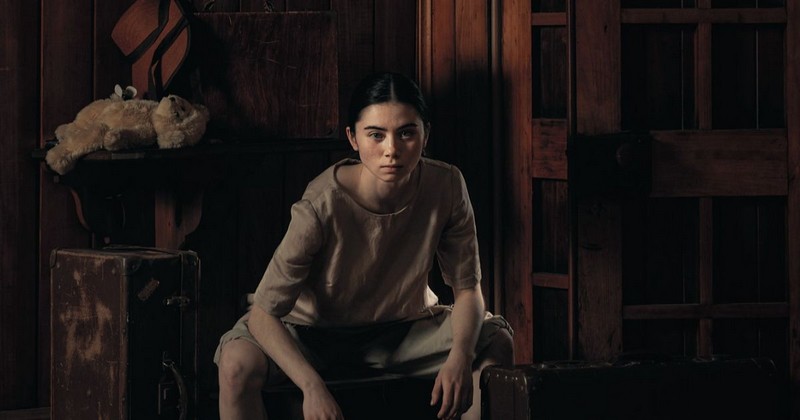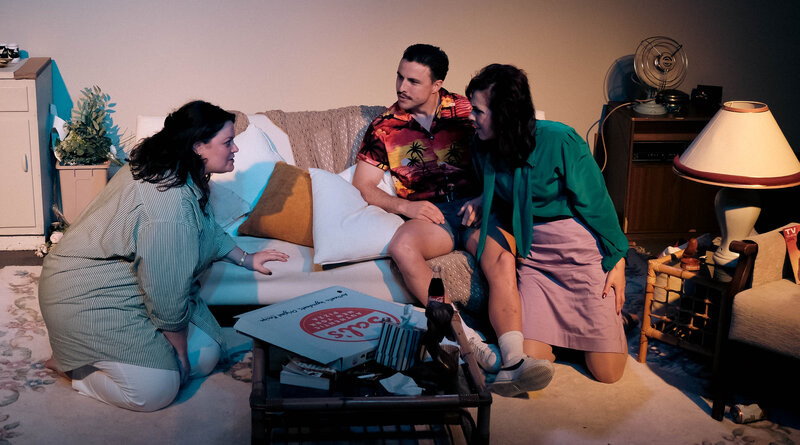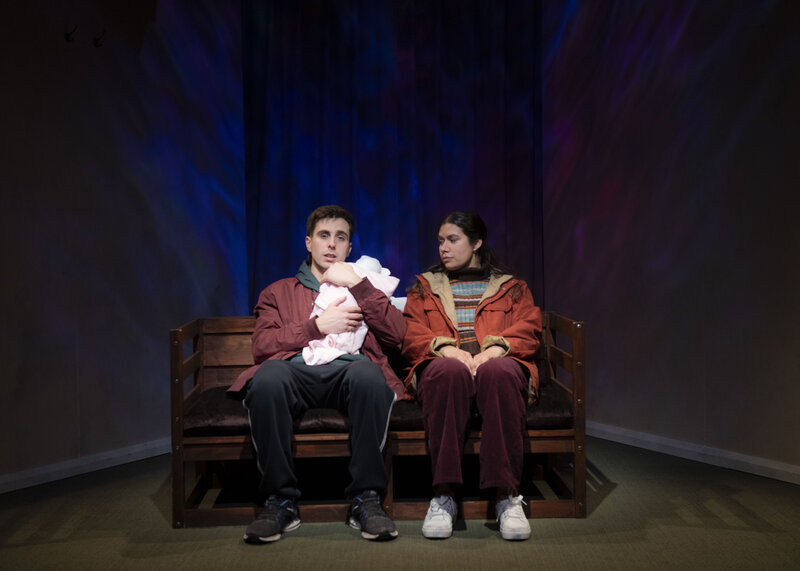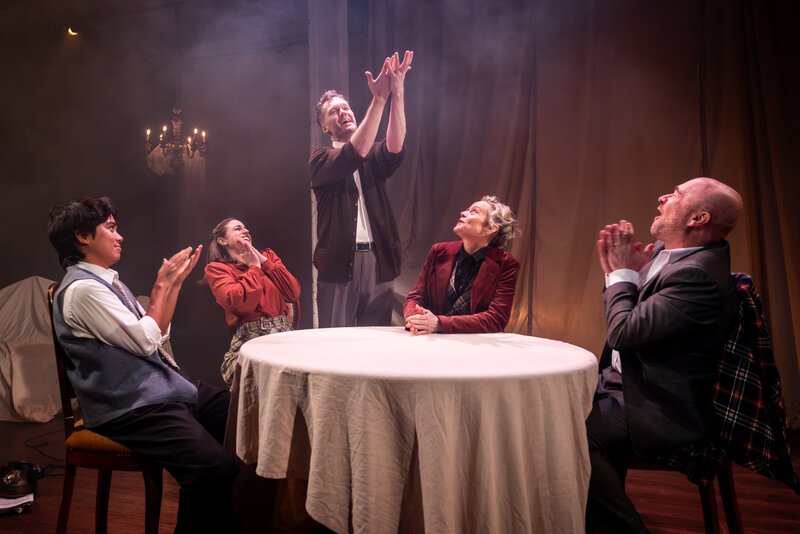Symbolic contrasts abound within The Curators’ stylish production of Angela Betzien’s Children of the Black Skirt, starting from its initial folly of youthful frolic and then soon-after stark at-attention responses of children in-fear. This establishes both the aesthetic sophistication and the narrative premise of the now-iconic work which is set in an abandoned orphanage that has been stumbled upon by three lost children in contemporary Australia. As the children enter, they cross into its timeless spirit world, changeling into its long-ago living-in-misery residents, interacting with its relics and telling the stories of children past, all under the unyielding gaze of governess, The Black Skirt (Lisa Hickey).

Rather than a docudrama, the play is an episodic Australian gothic fairytale for young people mixed with magical realism, and director Helen Strube’s lean into this its non-naturalism provides much of the show’s reward. The history of Australia through the eyes of children, from convict times to early white occupation, to the vast era of the Stolen Generation to World War Two and beyond inter-generational trauma, remains at the forefront of things, however, the mesmeric stylised movement of physical theatre (movement director Anna Yen) which fluids action around the length of the play’s Christ Church Milton staging, adds to its poetry.
The play fits well into the heritage-listed space, which is additionally so full of religious iconography. Bill Haycock’s simple, dynamic and multi-faceted set design enhances the physical storytelling, allowing for the creation of different settings and prop usage in play-out of various choreographed orphanage routines. The heightened physical performance skills of the cast add tension and drama, while the at-times abstract movement entices the audience into storytelling that sees actors utilising basic set items of sheets, pillows and alike to create character.
An Australian gothic sensibility is weaved throughout the complex soundscape of what is ultimately a haunting play. Indeed, Peter Goodwin’s sound design is an integral part of the piece, operating like a film-score to enhance the foreboding build of its dramatic action and lingering the deep sounds of its eerie, antagonistic bush landscape atop its story, which contrasts against the sing-song use of nursery rhymes amongst dialogue to underpin key ideas.
The initial beige of the simple sack dress attire of the children (evoking thoughts of the bush from which they have emerged) and then their symbolic monochrome uniforms (with Junior or Senior child status alphabetic reminder) work in juxtaposition to the imposition of The Black Skirt’s titular costume. And what an imposing figure she is at first introduction, altered before us, with Nathaniel Knight’s lighting evoking all that she represents (without her ever speaking a word), as she proceeds to puppet the children into her command.
The cast of emerging and established artists (Hickey along with Mikeal Bobart, Shahnee Hunter, Malika Savory, and Vivien Whittle) all give vibrant performances. A standout, however, comes from Savory as 8-year-old New One, being consoled by 11-year-old Old One (Shahnee Hunter). Not only does she bring a viscerally palpable terror as New One hides under her blankets, but she easily switches into her other roles as 1850s Scottish girl Lizzie and 1940s Yorkshire lad Tom, complete with excellent accent work in add to the historical aspect, and realisation of the use of physical aspects to transform characters in front of the audience, Brecht-style.

Hickey is excellent as the always silent, yet still incredibly stern headmistress implements control with an oversized pair of scissors that ominously jangle from tie around her waist in representation of the severed-ties trauma so integral to the story. On occasion, however, the skirt is used with quirk rather than just allowing it stand alone as an eerie symbol. She has a wonderful stage presence, emphasised by a variety of physical contortions in compensate for her lack of dialogue as The Black Skirt, and, as orphanage inspector Harold Horrocks, she enlivens an over-the-top comic satire scene without toeing too far into Sir Les Patterson territory.
This is a complex, but beautifully-crafted production of much theatricality, whose artistry complements its core intent of shedding light on some of Australia’s darkest history and giving voice to the forgotten children who were raised in institutions or state care from approximately 1860 to 1960. And if its powerful political provocation consideration of our lack and loss of cultural memory is not enough, the inclusion of real-life recordings of the voices of survivors of institutional abuse, to extend the original soundtrack, gives an appreciated verbatim theatre punctuation, even if these are sometimes difficult to hear. At 60 minutes (with also a 15-minute Q & A), however, this Children of the Black Skirt is an efficient, engaging showcase of everything that makes it not only a classic of Australian theatre but a work of continued resonance.





